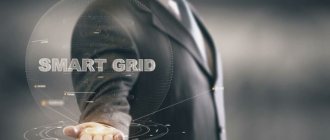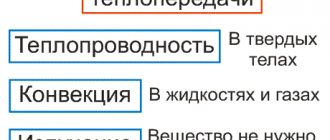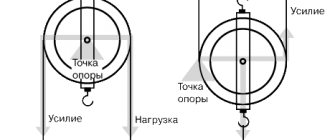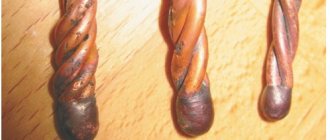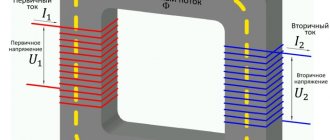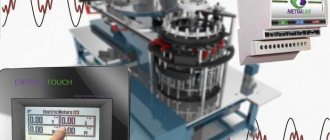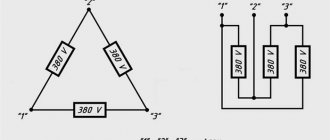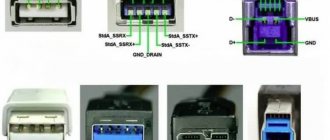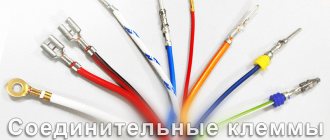Solving the problem of wireless transmission of electrical energy over long distances is a long-standing dream of mankind. You can imagine how much cheaper electricity would be without the cost of conductive products. The scientific and technological revolution does not stand still. There is hope that this dream will come true in the near future. This is evidenced by new developments in this area.
Humanity's dream is wireless transmission of electricity
History of wireless power transmission
The great French physicist Ampere in 1820, through numerous experiments, came to the conclusion that a magnetic field can excite an electric current in a metal body. This is how Ampere's fundamental law appeared.
Michael Faraday discovered the law of induction in 1831, which became the basis for the development of such a science as electromagnetism.
James Maxwell, after much experimentation, systematized his observations, the quintessence of which in 1864 became Maxwell's equation. The formula explained the behavior of the electromagnetic field.
Nikola Tesla improved the apparatus for generating an electromagnetic field, invented by Heinrich Hertz in 1888. At the 1893 World's Fair in Chicago, Tesla demonstrated the glow of phosphorus light bulbs without wires.
Nikola Tesla
Russian scientist Alexander Popov made his contribution to the development of wireless energy transmission. In 1895, at a meeting of the Russian Physicochemical Society, he showed the detector radio receiver he had invented.
Further, up to the present day, new inventions in the field of wireless transmission of electrical energy have been patented. A lot of experiments were carried out, an absolutely large number of discoveries were made. The latest achievement in this area is the transmission of electricity over long distances wirelessly using Wi-Fi technology. In 2022, a mobile phone without a battery will be invented.
Principle of operation
Wireless electricity is literally the transfer of electricity over a distance without the use of wires. More often, this technology is compared with the transfer of information data, for example, with Wi-Fi or a mobile phone. Currently, special methods are being developed that will improve the process and make it smooth, without interruptions.
The basis for this technology is magnetism and electromagnetism, as well as simple operating principles. We are talking about having a system that consists of two coils - a transmitter and a receiver. Thanks to their joint work, the alternating magnetic field is regenerated, and then a non-direct current appears. The voltage in the receiver coil is used, for example, to charge a battery or power a smartphone. Electric current passing through the wire around the cable causes a circular field. The coil of wire that remains without current receives electric current from the first coil. This ensures inductive coupling.
How it works
Transmission of electricity over a distance
Wireless electricity is based on a phenomenon called electromagnetism. The work involves two coils of metal wires. One of them is connected to a current source, around which a magnetic field is created. The second coil, perceiving this field, induces a secondary electric current in its winding.
Scheme for transmitting electricity without wires
Basic elements of an electricity generating plant
Two-element installation: oscillating and receiving. The first element is a Tesla transformer, which is powered by the IR2153 chip. The Kacher will operate at 230 kilohertz, running on a 23 kilohertz chip. There will be 2 field-effect transistors at the output. The coil is wound with 0.35 mm copper wire. 950 rpm. Almost all the details are there. The only drawback is the diet. In the following video you can see how the device turned out. This Chinese store sells ready-made rolls.
The other part of the diagram is more complex. It will be more expensive. Rare ferrites are used. But the game is worth the candle. The circuit completely does not correspond to the usual concepts of physics and electronics.
Transfer principles
Power generation
The latest developments by scientists from the USA and South Korea used magnetic resonance systems CMRS and DCRS. Korean technology turned out to be more advanced. It was possible to transmit electricity over 5 meters. Thanks to compact DCRS dipole coils, it is possible to power all consumers in a medium-sized room without wires.
Important! The imperfection of modern equipment significantly limits the length of the path of electricity through the air.
Despite this, scientists around the world are busy developing new technologies whose task is to transfer energy over distances of tens and hundreds of kilometers. Already today, new scientific achievements in the field of electricity delivery without wired power lines are being developed and implemented.
Security measures
Once your CT is assembled, there are a few precautions to take before launching. First you need to check the wiring in the room where you plan to connect the transformer
Secondly, check the insulation of the windings.
It is also worth remembering the simplest precautions. The average voltage of the secondary winding is 700A, 15A per person is already deadly
In addition, it is worth moving all electrical appliances away; if they get into the range of the coil, they can burn out.
CT is a revolutionary discovery of its time, which is underestimated today. Today the Tesla transformer is used only for the entertainment of home electricians and in light displays. You can make a coil yourself using available tools. You will need a PVC pipe, several hundred meters of copper wire, a couple of meters of copper tubing, a transistor and a couple of resistors.
Technologies
Non-contractual electricity consumption and its legality
The most promising directions in the development of new methods and methods for transporting electricity without material contact are:
- ultrasonic method;
- electromagnetic induction method;
- electrostatic induction;
- microwave radiation;
- laser method;
- electrical conductivity of the Earth.
Ultrasonic method
At a recent exhibition in 2011, students at the University of Pennsylvania (USA) demonstrated a method for transmitting electric current using ultrasound. The transmitter generated acoustic waves in the ultrasonic range, and the receiver converted them into electric current. Ultrasound was not chosen by chance as an energy carrier. Its effect on the human body is absolutely harmless.
The disadvantage of this method is that the transmission efficiency is very low, direct visibility between subscribers and a limited distance (7-10 meters) are required.
Electromagnetic induction method
The operation of an ordinary transformer gives an idea of how electricity is transmitted without wires by electromagnetic induction. The process involves two coils. The magnetic field excited by the current flowing through the turns of the primary winding induces an electric flow in the secondary winding of the transformer.
Examples of the use of the electromagnetic induction effect include smartphone chargers and electric toothbrushes. The disadvantage of this method of energy transfer is the inevitable proximity of the coils. Even with a slight increase in the gap between the windings, most of the energy begins to be dispersed in space.
One type of electromagnetic induction is the use of resonance. The essence of the method is that the receiver and transmitter operate in the same frequency range. The transmitting and receiving devices are a solenoid with a single layer of turns. The generating device is equipped with a capacitor circuit, with the help of which it is tuned to the receiver frequency.
Demonstration of the electromagnetic induction method
Electrostatic induction
The method is based on the principle of energy passing through a dielectric body. The method is called capacitive coupling. The generator creates an electric field in the container, which excites a potential difference between the two electrodes of the consumer.
Nikola Tesla used the electrostatic induction method to demonstrate a wireless lighting lamp. The lamp was powered by a high-frequency alternating electric field. It glowed evenly, regardless of its movement in the space of the room.
Microwave radiation
Space engineering specialists have developed a way to transmit electricity from orbital solar panels to spacecraft using a microwave radio signal. The problem with this method is that antennas with a very large aperture are required to receive and transmit the beam radiation.
NASA scientists in 1978 concluded that to transmit a microwave beam with a frequency of 2.45 GHz, the emitting antenna must have a reflective surface diameter of 1 km. The receiving rectenna should be 10 km in diameter. It is possible to reduce these dimensions by using ultrashort waves. However, signals in this range are quickly absorbed by the atmosphere or blocked by rainfall.
Note! The safe power density of the emitted energy is 1 mW/cm2. An antenna with a diameter of 10 km and a transmitting power of 750 MW meets this standard.
Laser method
Transmission of electricity over long distances wirelessly using lasers has only recently begun. The idea is that a laser beam, carrying an energy potential, hits the photocell of the receiving device, where high-frequency electromagnetic radiation is converted into electric current.
Laser energy transfer technology, previously used in the military field, is being successfully introduced into the civilian sphere of human activity. The developments of American scientists led to the invention of an unmanned aerial vehicle that receives energy power from a laser beam. In 2006, a drone was demonstrated that could fly non-stop, powered by a laser system.
In 2009, an experiment in space was successfully carried out to transmit energy over one kilometer with a power of 500 W.
Electrical conductivity of the Earth
There is a theory of using the Earth's interior and oceans for wireless energy transfer. The electrical conductivity of the hydrosphere and metal ore deposits can be used to transmit low-frequency alternating current. Electrostatic induction of dielectric bodies can occur in huge deposits of quartz sand and similar minerals.
The transmission of electric current is also possible through air space using the method of electrostatic induction. Nikola Tesla once suggested that in the future there will be technologies that will use the earth, ocean waters and the atmosphere of the planet to transmit electricity.
Worldwide Wireless System
For the first time, information about the Worldwide Wireless Electricity Transmission System became known from the great scientist Tesla. In 1904, he stated that creating a VBS using the high electrical conductivity of plasma and the Earth was quite feasible.
Product market analysis
Any conclusions must always be confirmed. Using the Yandex Market service for searching and selecting products, I analyzed the market for wireless devices.
The query “wireless charging” found four pages of products, the most popular of which is XiaomiMiWirelessChargingPad with an average price in stores of 1,290 rubles.
Note that the average cost of any wired charger is 200-300 rubles, from which we can conclude that a wireless device is not of interest to the average buyer, since, most likely, for him such a high cost is an overpayment for not so big changes in household life and claimed benefits.
1. SAMSUNG devices
Devices from this brand are also popular, namely two models:
Samsung EP-P5200
Samsung EP-P1100
The price of the first is much higher than average, the second is almost on par with Xiaomi.
2. Apple devices. Almost everyone will say: expensive. And he will be right.
3. Other manufacturers.
Flipping through the product catalog below, you can see devices for 40,000 rubles. Of course, there is a guarantee of quality and high power, but what does the price consist of? Of course, not only from the materials used, but also from the complexity of the technology and design. At the beginning of my work, I stated that the field of EMR is underdeveloped, and these facts confirm this.
The price generally ranges from 1,500 rubles to 20,000 rubles. The range of wireless chargers is not so wide. Only leading brands are engaged in the production of such goods, adding to the cost not only the price of the technology, but also their name.
Real projects today
Of all that the electrical engineering market offers today, wireless power transmission includes chargers for smartphones and electric toothbrushes. They use the principle of electromagnetic induction.
Contactless smartphone charging
The aircraft industry has begun mass production of unmanned aerial vehicles powered by wireless transmission of electricity. A small microwave helicopter with a rectenna can rise to a height of up to 15 meters above the ground. Drones have appeared that can fly within the visibility range of a laser beam.
Chinese home appliance manufacturer Haier Group has been producing wireless LCD TVs since 2010.
Each device needs its own charger
The same problem with the positioning of electromagnetic coils ultimately leads to the next one - the lack of a uniform standard in the industry.
The companies agreed to use low-current Qi technology and unified the devices. But either Samsung or Xiaomi release models that do not work with other people’s chargers at full speed.
Xiaomi's high-power wireless charging, introduced a couple of months ago, only works when it hits the base exactly.
And it quickly charges the battery only up to 50%, subsequently reducing the power from 80 to 20 W. Moreover, even at maximum “speed” the efficiency is only 65 W.
This charger does not work “at low speed” with other smartphones - the coils are of a different size. For the same reason, standard Qi-chargers “swing” with the corresponding Mi 11 Ultra only up to 10 W.
A single process standard is needed, otherwise the infrastructure will only work for one manufacturer.
Even with smartphones, this is not beneficial to the user. And what about cars?
Especially when existing prototypes from Momentum Dynamic promise incredible, impossible 100% efficiency?
Prospects for wireless transmission of electricity
Research work is currently underway and projects are being developed to create electric vehicles that will move along the road surface with a current conductor that induces an electric current in the vehicle’s motor.
Electric vehicle power supply
A number of leading companies are developing wireless power supplies that can supply electricity to all consumers within the same room.
In the future, the emergence of routes consisting of a number of wireless sources of electricity that will be able to ensure the movement of aircraft over long distances.
With the advent of new materials, improved devices and inventions, wireless power transmission will in the near future cover all areas of human activity.
Modern uses of the Tesla coil
The most popular is the demo version, which allows you to see the electric arc in a beautiful purple color and turn on the lamp wirelessly. However, sometimes the Tesla coil principle is still used:
- In internal combustion engine ignition systems. It uses the same principle of converting energy into an electric arc. Only the ignition operates at low frequencies, while the Tesla coil operates at high frequencies.
- For power supply of fluorescent and neon lamps. Although the latter is most often used as a ploy.
- To detect holes in vacuum systems.
As you can see, the invention is not yet fully developed. The patent is still pending investor review. But, most likely, there will never be an investor.
Self-production
So, the easiest way to make a Tesla coil for dummies with your own hands. You can often find figures on the Internet that exceed the cost of a good smartphone, but in reality, you can assemble a 12V transformer from a pile of garbage in the garage, which will allow you to have fun by turning on a lamp without using an outlet.
What should be the result
Requires enamelled copper wire. If you can't find nail polish, you'll also need regular nail polish. The wire diameter can vary from 0.1 to 0.3 mm. It takes about 200 meters to maintain the number of revolutions. It can be wound on a regular PVC pipe with a diameter of 4 to 7 cm. Height is from 15 to 30 cm. You will also need to purchase a transistor, for example, D13007, a pair of resistors and wires. It would be nice to have a computer cooler that cools the transistor.
Now you can start assembling:
- cut 30 cm of pipe;
- wrap it with thread. The bends should be as close as possible to each other. If the wire is not coated with enamel, varnish it. From the top of the pipe, thread the end of the wire through the wall and lift it so that it protrudes 2 cm above the installed pipe.;
- make a platform. A regular chipboard will do;
- you can make the first coil. You need to take a copper tube with a diameter of 6 mm, bend it three and a half turns and secure it to the frame. If the pipe diameter is smaller, there should be more turns. Its diameter should be 3 cm larger than that of the second coil. Attach to the frame. Immediately attach the second coil;
- There are several ways to create a torus. Copper pipes can be used. But it’s easier to take a regular aluminum corrugation and a metal crossbar for attaching to the protruding end of the wire. If the wire is too fragile to hold the toroid, a nail can be used, as in the image below;
- don't forget the safety ring. However, if one end of the primary circuit is grounded, it can be dispensed with;
- when the design is ready, the transistor is connected according to the diagram, connected to a radiator or cooler, then power must be applied, and the installation is completed.
The first coil can be made flat as in the photo.
Many people use a regular Durasel crown as a power supply for installation.
DIY Tesla transformer, simple circuit
Sources
- https://lightika.com/raznoe/besprovodnaya-peredacha-energii.html
- https://amperof.ru/teoriya/besprovodnaya-peredacha-elektroenergii.html
- https://uk-parkovaya.ru/secrets/wires/3-sposoba-besprovodnoj-peredaci-energii-tesla-kak-vsegda-byl-prav-lazery-mikrovolny-i-katuski-induktivnosti.html
- https://domikelectrica.ru/3-sposoba-peredachi-energii-bez-provodov/
- https://www.asutpp.ru/besprovodnaya-peredacha-elektrichestva.html
- https://geekometr.ru/statji/besprovodnoj-sposob-peredachi-elektroenergii.html
- https://mentamore.com/covremennye-texnologii/besprovodnoe-elektrichestvo.html
- [https://radioprog.ru/post/152]
[collapse]
Standardized Minds
The greats of this world understand the importance of technology and do not want to allow standards from different manufacturers to mix (as was the case at the dawn of the computer industry). The Ministry of Internal Affairs and Communications of Japan was one of the first to decide to adopt standards for wireless power transmission
Its variants were proposed by Toshiba, which is already working on the development, research and standardization of wireless power standards for home appliances. The initiative groups hope to bring the finished technology to the market between 2015 and 2020. Standardization will be divided into three stages: the first involves the development of inductive coupling standards: the technology will be able to charge objects at a distance of several millimeters at a frequency of several hundred kHz, the second standardizes the inductive resonance coupling method developed at the Massachusetts Institute of Technology for charging objects at a distance of several meters from source... The third phase will standardize receivers to ensure high energy efficiency and, based on this standard, manufacturers of a wide variety of equipment will be able to develop new devices.
| Who would have thought that something as mundane as electric toothbrushes would be one of the first to receive cordless power? | The figure shows the implementation of WiTricity: all devices, including the table lamp, have no wires. Isn't this a fairy tale? |
